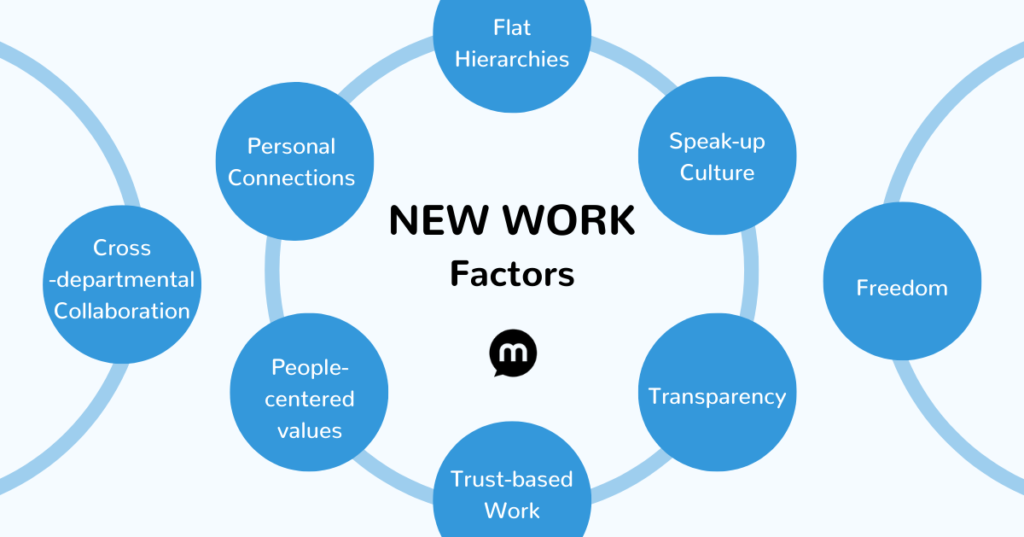Table of Contents
Why?
The industrial era has given way to the era of technology. The new workforce prefers a digital workspace that makes use of cutting-edge technology and gives them some level of independence.
In addition, the Covid 19 pandemic has increased the urgency for businesses to implement new operating procedures that will enable them to thrive and expand in a dynamic market.
In this article, we’ll discuss the advantages of the new ways of working. Additionally, we’ll examine the key technologies that you’ll need in this brand-new workplace.
The “Way Of Working” Is What?
The Ways of Working, or WoW, are the guidelines for how to conduct yourself within a particular framework. They are a summary of how people interact with one another and are frequently focused on teamwork and success.
A set of team expectations for interacting, cooperating, and participating are defined by the ways of working guidelines, which improve communication and teamwork.
This aids agile software development teams in quickly adjusting to the process and overcoming the difficulties it presents. However, Ways of Working (WoW) encompass more than just choosing a software development process.
The capacity to adapt and learn is a competitive advantage in this rapidly evolving digital world. To keep adjusting and learning as we go, it is essential that teams define appropriate Ways of Working.
What Is the ‘Way of Working?
The Ways of Working, or WoW, are the guidelines for how you should conduct yourself within a particular framework, summarizing how people work together with a typical emphasis on teamwork and success.
The guidelines in Ways of Working outline a group’s expectations for interacting, cooperating, and participating while also enhancing communication and teamwork.
This enables Agile software development teams to quickly adapt to the process and meet its challenges. But choosing a software development process is just one aspect of Ways of Working (WoW).
The capacity to adapt and learn is a competitive advantage in this rapidly evolving digital world. To keep adjusting and learning as we go, it is essential that teams define appropriate Ways of Working.
What Is the Agile Way of Working?
No matter what the project requirements are, an agile methodology includes practices and frameworks that are suitable for any organization that places a high priority on speed and efficiency.
Agile methodologies are used by development teams to deliver software incrementally. They are prepared to embark on a progressive transformation journey once they reach a certain level of maturity while scaling.
To scale Agile within the enterprise and facilitate teams, portfolios, and cogent high-level solutions, a team can initially choose one Agile Way of Working and then switch to another WoW.
For each team or product, WoW specifies a specific Agile working methodology. It enables the unit to operate with the fewest restrictions and greatest flexibility possible in order to maximize their performances. In order to fulfill needs and requirements specific to the company, a team adopts and develops these practices and methods.
6 Ways Of Working Within Agile
Scrum
This Agile framework is set up like a conference room, where backlog management plans are developed and roles are assigned to schedule the work with deadlines. Scrum generates results incrementally and iteratively, allowing for flexibility and quick changes.
A Scrum team typically consists of a Product Owner, a Development Team, and a Scrum Master. These cross-functional teams operate on a self-organizing basis. They can choose the best ways to complete their work on their own, rather than being guided by others from outside the team.
Enterprise Scaling Framework
You can implement a lean-Agile methodology at the enterprise level and scale from top to bottom with an enterprise scaling framework. This framework is further categorized into four layers:
- Value Stream
- Portfolio
- Team
- Program
Even the most complex systems can scale and adapt to the needs of the stakeholders with the aid of enterprise scaling frameworks. Additionally, the Enterprise Scaling Framework enables the reliable and efficient delivery of valuable software.
Kanban
Kanban boards are tools that can help you be more productive while maintaining the continuity of the story and its various features. There are no bottlenecks that would slow down the current pace of work, allowing for smooth flow and increased productivity. You have a lean methodology with Kanban that allows you to conceptualize the workflow and reduce labor in accordance with a team’s capacity.
Disciplined Agile
Modern Agile and lean techniques are supported by the disciplined Agile (DA) framework. It is a hybrid framework that is goal-driven and covers topics that the Agile framework’s smaller scales don’t cover. Additionally, DA broadens the Scrum lifecycle to enable end-to-end delivery cycles for customers.
Disciplined Agile is categorized into the following phases:
- project launch phase: the beginning. Assuring that all teams are linked, coordinated, and understand one another’s objectives is the aim of this phase.
- Building: The goal of this stage is to create a consumable solution that has sufficient functionality to satisfy the demands of the stakeholders.
- Transition (Delivery): This final phase concentrates on putting the solution into use. A Hardening Sprint, Release phase, or Deployment phase are additional names for this stage.
Large-scale Scrum
The Large Scale Scrum (LeSS) process aids in spreading Scrum across numerous teams. LeSS Huge and LeSS framework are the two structures that are shared.
A single product with backlogs, sprint planning, and the clarification of “Done” and output are all supported by this methodology. LeSS’s primary goal is to scale the entire product while staying within Scrum’s bounds.

Agile Portfolio
Agile portfolio management enables businesses to manage, identify, prioritize, and arrange products. Teams can adapt to changes without having to keep an eye on resources thanks to their independent nature, which produces less flux.
Teams can easily improve and enhance software development flow and delivery with Agile Portfolio management, and the outcomes are listed for the supported portfolio areas.
4 Game-changing Benefits Of New Ways Of Working
Employees who are content and motivated will provide happier and more satisfied customers.
Employee engagement can be improved by using new technology and implementing a new way of working.
1. Varied Work Agreements
The employer is no longer required to provide full-time positions or associated benefits in order for the employee to be able to complete their work.
Instead of forcing people to become “employees,” they can just hire people who can complete a specific task. As a result, they are relieved of the burden of worrying about the high costs, human resource management, or the legal ramifications of hiring a full-time employee.
Employees can also benefit from flexible work arrangements like freelancing.
Many professionals discover that by managing their own time and expanding their work horizons, they are more engaged at work.
This type of portfolio worker has several part-time employment contracts that allow them to work with multiple clients and enhance their skills.
Professionals are no longer limited in their success to a full-time position with a single employer for many years.
2. Promotes A Culture Of Equality
Older working procedures involved hierarchical structures, where the top management held complete authority and distributed tasks through the layers of management.
Knowledge hoarding was seen as a way for leaders to demonstrate their dominance. People were encouraged to conform to the culture, while those who disagreed with it were dismissed.
These outdated work cultures are evolving, though, in response to the new ways of working. The new generation of digital natives in the working population emphasizes creating a culture of equality.
These experts think that sharing knowledge will lead to better results.
They want to know why they should perform a task a certain way or why knowledge work requires a set location and time. They also think that using technology to carry out routine tasks and concentrating on one’s core competencies are important.
3. Allows Greater Flexibility Of Work
The act of working in the past involved giving another person tangible items or documents. Fixed workstations and set workdays were therefore required.
To be more flexible at work, technology has improved.
Teams working in-house and online can communicate with one another while at home or traveling. Additionally, they are able to share files virtually with anyone, anywhere by taking their computers and files with them wherever they go.
The workforce of the new generation also has different priorities.
Although they still value money and financial security, they prefer not to base their entire existence on their jobs. They engage with friends socially, go on vacation, use social media, have family obligations, etc., which are equally important.
They are questioning the outdated management practices of fixed working hours and locations as a result of this mentality shift.
4. Prioritizes Work-life Balance
Prioritizing a good salary in order to maintain a respectable standard of living was a tradition among the previous generation of workers. To get to the top, they were occasionally even prepared to sacrifice their social and personal lives.
However, as the focus on mental health at the workplace increases, so does the need for employees to maintain a good work-life balance.
In order to achieve this balance, young workers are even open to changing jobs. They favor positions that allow them to advance their careers without compromising their personal lives.




